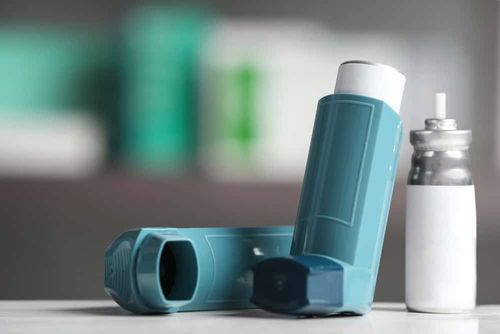This is an automatically translated article.
The article was professionally consulted by Specialist Doctor I Do Van Manh - Emergency Department - Vinmec Ha Long International Hospital.Chronic obstructive pulmonary disease (COPD) is a leading cause of disability and death worldwide. However, early diagnosis of COPD and treatment of the disease can reduce the severity of the disease, reduce the risk of death, and reduce the socio-economic burden.
1. Learn about chronic obstructive pulmonary disease
Chronic Obstructive Pulmonary Disease (COPD) is a disease characterized by progressive airway obstruction. The disease is associated with an abnormal inflammatory response of the airways and lung parenchyma to noxious particles and gases. Exacerbations of chronic obstructive pulmonary disease and comorbidities may increase patient severity. This is the cause of disability and death in humans, significantly increasing the socio-economic burden.Although it is a dangerous disease and has many complications, this disease is completely preventable and treatable. Accordingly, early detection and treatment of COPD can reduce the severity of the disease, reduce the risk of complications and death in patients. Depending on the assessment of COPD by FEV1 to make accurate conclusions and have an appropriate treatment plan.
2. Assess the severity of COPD by FEV1

Đánh giá COPD bằng FEV1 để xác định mức độ nặng của bệnh
The assessment of COPD aims to determine the severity of the disease, the impact on the patient's health status, the future risk (exacerbation, hospitalization, death) for preventive measures. , suitable treatment. Aspects of assessment included symptoms, degree of airway obstruction, risk of exacerbations, and assessment of comorbidities.
2.1 What is FEV1?
Spirometry is a method of measuring respiratory function to help evaluate lung activity through inhalation and exhalation, diagnose lung diseases, most commonly chronic obstructive pulmonary disease. At the same time, spirometry is also used to monitor the severity - mildness of lung disease and monitor the effectiveness of treatment.
The spirometer measures the volume and flow rate of the patient's inhaled - exhaled air. The parameters recorded by the device include:
Forced expiratory volume in the first 1 second (FEV1 - stands for Forced expiratory volume in one second). If the lungs and airways are normal, a person can blow most of the air out of the lungs within 1 second; Forced vital capacity (FVC): Maximum expiratory volume; Index FEV1/FVC: The ratio between the two above parameters, helping to assess the status of pulmonary obstruction. 2.2 Assessment of COPD severity by FEV1

Các giai đoạn phát triển của copd
Spirometry can diagnose chronic obstructive pulmonary disease (COPD). Specifically, if the airways are narrow or blocked, it will reduce the amount of air exhaled. Thus, the FEV1 index will decrease, the FEV1/FVC ratio will be lower than normal. Accordingly, the FEV1 values to diagnose the severity of COPD are:
Mild stage: FEV1 index >80% of theoretical number, FEV1/FVC ratio <70%; may or may not have chronic symptoms of the disease such as cough, sputum production,...; Intermediate stage: 50% < FEV1 index < 80% of the theoretical number, FEV1/FVC ratio < 70%; may or may not have chronic symptoms of the disease such as cough, sputum production, frequent and progressive dyspnea,...; Severe stage: 30% < FEV1 index < 50% of theoretical number, FEV1/FVC ratio < 70%; symptoms of dyspnea increased and recurred in several episodes, affecting the patient's quality of life,...; Very severe stage: FEV1 index <30% of theoretical number, FEV1/FVC ratio <70% or FEV1 <50% of theoretical number but accompanied by respiratory failure or signs of right heart failure. The severity of chronic obstructive pulmonary disease (COPD) can be diagnosed and assessed by the FEV1 value. And when there are warning signs of the disease, it is best for patients to visit a doctor for timely diagnosis and treatment, to avoid the risk of unpredictable complications.
Vinmec International General Hospital has a team of highly specialized and experienced doctors, with a full system of modern equipment, convenient for diagnosing and assessing the severity of the disease. Chronic obstructive pulmonary disease, making treatment more effective.
Specialist Doctor Do Van Manh has more than 10 years of experience in the field of Critical Care - Anti-poison. He used to be the Deputy Head of the Intensive Care Unit at Quang Ninh General Hospital before working at Vinmec Ha Long International Hospital.
For detailed advice on the diagnosis and assessment of the severity of chronic obstructive pulmonary disease at Vinmec, please come directly to the Vinmec health system or register for an online examination HERE.
MORE:
Breathing Guidelines in Chronic Obstructive Pulmonary Disease Is chronic obstructive pulmonary disease contagious? Management of exacerbations of chronic obstructive pulmonary disease














